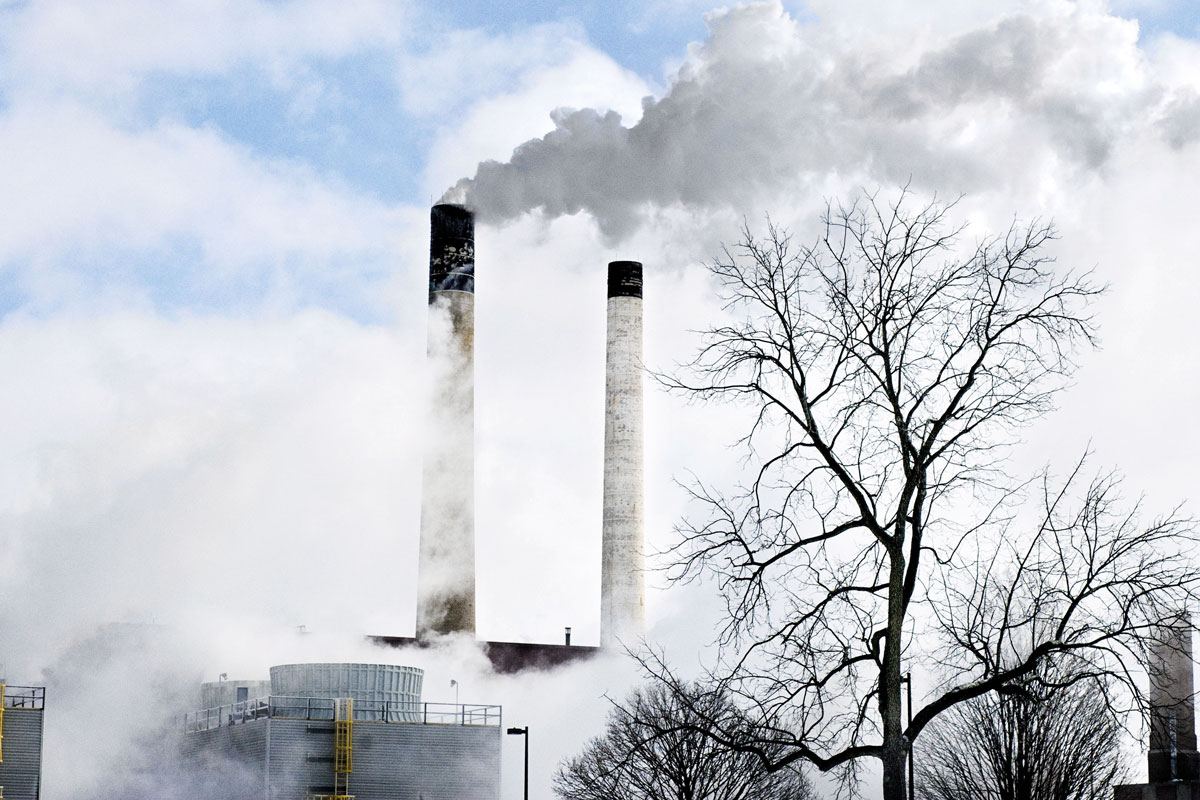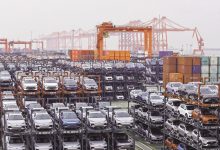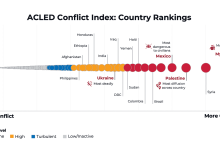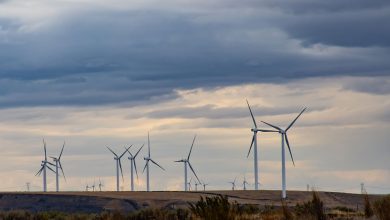Internationalization of the Romanian energy sector
The change at the helms of OMV Petrom brings back on the public agenda the topic of OMV Petrom’s internationalization. By extension, also – the ‘internationalization’ of Romanian companies in the energy sector. A topic that has been present over time on the agenda of most companies in the industry. This time, the news about OMV Petrom overlaps the high-level meeting between the representatives of OMV and the President of Romania, which takes place against the backdrop of an internationalization movement that has been taking place for some time in the Romanian energy sector. It’s true, a movement that is not very firm and clearly shaped yet, but one that OMV Petrom could reinforce, bringing it to the next level.
2018 has brought in the Romanian energy sector one of the biggest changes in the history of the last decade. The scale of the change is first of all given by the fact that a Romanian, Mariana Gheorghe (CEO of the largest and most important company in the Romanian energy sector – OMV Petrom), was replaced (officially, on 9 January) with Christina Verchere – a 46-year-old Scot (that has worked for many years for oil giant BP). Another nuance of the ‘change’ however, and maybe even significantly more important, is given by the reiteration in firm terms of a development strategy of OMV Petrom, build on company’s internationalization axis. An idea not exactly foreign to company’s development plans, but which has never been publicly exposed in such a firm manner and at such a highly official level… as it was expressed during the meeting between OMV representatives and the President of Romania. “During the meeting, OMV AG management presented the development strategy of the company, which includes an increase in Petrom’s internationalization, in order to capitalize on opportunities existing in the region, as well as on a consistent growth of investments starting with this year,” the press release available on the website of the Presidential Administration shows.
Analysing the statement on Petrom’s internationalization in a note of mistrust – an approach that would be perfectly justified by the last 20 years characterized by the existence of numerous bombastic statements, full of kind and nice words and intentions, but often not put into practice… probably we shouldn’t even pay too much attention and weight to the statements of 9 January 2018 (day of the meeting between the representatives of OMV and the Romanian Presidency). A brief look back reveals that the idea of ‘internationalization’ has been released publicly before; as early as 2006, when she was appointed CEO of the company, Mariana Gheorghe talked about turning Petrom into a ‘multinational company of the East’. The first measure of the fresh (at the time) CEO was to establish a strategy division that focused on international expansion of operations – an objective especially declared was development in the Caspian region.
“Our objective is to become oil and gas leaders in South-Eastern Europe. For now, we are only the largest producer in this region. Within this strategy for the internationalization of operations, we want Kazakhstan to become, together with Romania, a core business region. The Caspian region is our target” – Mariana Gheorghe said at the time of her investiture.
An ambitious target, but the results are not very relevant! In other words, probably through fuel sales in the neighbouring countries and by developing the network of filling stations in the Republic of Moldova, Bulgaria and Serbia one step has been taken in the direction of internationalization; another step in this direction could be considered Petrom’s entry in various consortia, in projects for the exploration and exploitation of fields in the Black Sea, in the territorial waters of Bulgaria or Ukraine (this latter project subsequently abandoned). We can also mention the transaction performed in 2009-2010, through which Korned LLP was taken over, a Kazakh company that holds the license for the exploitation of an important local field (Petrom being present in Kazakhstan since 1998, where it already had exploitation licenses for five fields). And probably there are other examples of steps taken in the sense of Petrom’s ‘internationalization’.
Their sum hasn’t managed however to bring Petrom at the level of ‘multinational company of the East’, so that the concept of ‘internationalization’ could gain its due consistency. Then, why would this time be any different? A potential answer would be that, put into a broader context, the statements of OMV representatives can be considered a commitment; so do the statements of Romania’s President, because they follow and overlap a set of elements (circumscribed to the energy sector and the political and economic path of Romania), which simply puts them in a new light. We are talking about a broader context, given by the set of information and events that, put together, bring added sustainability and credibility to the idea of internationalization, thus giving Petrom the chance to materialize its project in a more concrete and visible way than before.
Mutual commitment
Thus, a first element to be introduced in this broader analysis framework could be extracted precisely from the continuation of the aforementioned communiqué. “The OMV CEO also highlighted the need for predictability of the tax and legislative framework that is required to support the company’s performance and the development of a stable and competitive business environment. As far as the OMV Petrom – ExxonMobil partnership for the exploitation of the Neptun Deep block is concerned, this is further a major interest for both the Romanian state and investors. The President of Romania reiterated the importance of energy in increasing national and regional energy security. For this purpose, the status of works at the transmission infrastructure provides good perspectives for a functional transmission capacity when the exploitation of Black Sea resources starts”. This paragraph, read in a diplomatic note (taking into account the level at which these statements are made), can be interpreted as a true mutual ‘commitment’ of the parties, publicly expressed! An agreement whereby everyone offers and receives something following negotiations (whose existence is easy to presume, but whose terms, intensity and toughness are not very much known).
Simplifying, one could say that OMV ‘commits’ to resume a consistent investment program and internationalize Petrom (hinting including to potential acquisitions of profile players in the region; meaning that it commits in an approach that could take Petrom to the position of regional leader). In turn receiving support for the projects able to bring consistent income in a relatively short period of time (among them, implementing BRUA – which gives access to Western Europe for natural gas extracted from the Black Sea; getting the export license; maintaining royalties at a relatively moderate level; or, last but not least, launching by Romania a new licensing round for exploitation blocks).
And if the benefits of OMV AG are quite clear, it is worthwhile reviewing the benefits of Romania from Petrom’s ‘internationalization’ (benefits valid in the case of any other Romanian company, in a similar approach); first of all, it should be highlighted that a more significant presence of Petrom outside the borders would bring added value (created abroad) in Romania; an ‘internationalized’ Petrom could also be one of the pillars for the development in Romania of a regional ‘hub’ for the human resource and specialized know-how, as well as for companies in the auxiliary sectors (i.e. jobs for specialists and matching wages and thus important taxes and fees to the public budgets); last but not least, an increased presence of Petrom across national borders could strongly support the exit of local companies in the auxiliary industries, bringing them contracts in markets where Petrom itself would have a say.
These elements (mutual benefits) could therefore be enough to justify the ‘commitments’; moreover, there is an extensive series of aspects supplementing the broader framework in which the statements of OMV officials on Petrom’s internationalization should be interpreted.
Policy shift
It should also be noted that the meeting between OMV officials and Romania’s Presidency takes place following a long (and sprinkled with many harsh statements!) episode of discussions and controversies on the level of royalties paid by oil and gas companies. A set of discussions and replies whose hardiness seems to have faded lately; and the press statement on the Presidency’s website may be a first point to these controversies, suggesting that a common denominator has been reached.
In the same broader framework, in which the statements on Petrom’s internationalization should be interpreted, we can also include the fact that the statement (‘commitment’) of OMV officials falls within the guidelines established by Romania for state-owned companies in the energy sector. At least this can be said if we consider the statements made in late 2017 by the Energy Minister, according to which investments made – and not the profit or turnover (as it currently happens) will be taken into account in assessing the management performance of energy companies where the State is shareholder. Such an approach, resulting from the statements made during hearings in the parliamentary committee of investigation into the activity of the National Energy Regulatory Authority (ANRE) by the relevant minister, would lead to a radical change of the paradigm in which the Romanian companies operate; and their entry in the neighbouring foreign markets is an option, in conditions in which the potential of the domestic market is relatively limited.
However, it is true that a significant component of investments required by the State can be realized in the local infrastructure – which is completely deficient in all segments… and not necessarily in the acquisition of companies/markets outside Romania. But even in this case it is equally true that a relatively significant part of these investments (in the local infrastructure) could still be allocated to projects (either already started or new ones) connecting Romania from an energy point of view with states in the region; something that could be considered, without too much mistaking, a constituent element of the ‘internationalization’ movement visible in the entire Romanian energy sector. A movement to which Petrom would basically only align (and bring added strength – given the company’s financial dimensions and technical capabilities).
Transgaz – A successful mission
The first and obvious example that could support the idea of existence of an internationalization movement among the Romanian energy companies, is given by Transgaz. Company that in the last year alone has taken serious steps to increase its footprint in South-Eastern Europe. Participation in the tender for the majority stake in the Greek gas transmission operator – DESFA (an unsuccessful attempt in the first instance, but resumed in force at the end of 2017) is one of the most spectacular such steps; it was joined by the steps taken for taking over the Moldovan company Vestmoldtransgaz, which manages the Iasi-Ungheni gas transmission network and provides gas transmission services on the territory of the Republic of Moldova (a process started at the end of 2017 and still in progress).
Less spectacular maybe, but certainly with a decisive contribution to Transgaz’s ‘internationalization’ (at least as great as the two acquisitions previously mentioned) is Transgaz’s major involvement in the implementation of BRUA project; a project worth approximately EUR 560 million that translates on Romania’s territory into a 550-kilometer pipeline on Giurgiu – Podisor – Corbu – Hurezani – Hateg – Recas – Horia route and into three new compressor stations (Corbu, Hateg, Horia); they will link the existing interconnection points with the gas transmission systems in Bulgaria (Giurgiu) and Hungary (Csanadpalota). When BRUA is completed (estimated for 2019), the gas pipeline will allow the transmission of 1.5 billion cubic meters (bcm) of natural gas per year to Bulgaria and 4.4 bcm/year to Hungary.
From a European perspective, BRUA links Central Europe to the Southern Corridor that brings Azerbaijani gas from the Caspian Basin, via Turkey, through Greece and Albania – so we are talking about an obvious internationalization of Transgaz. For Romania however, it also means a line for gas transmission from the Black Sea to the remaining Europe and maybe an alternative route for gas from the Caspian Basin (exploited by Azerbaijan’s SOCAR, with which Transgaz already has a Memorandum of Understanding signed). BRUA is thus an important component of Romania’s policies aiming at transformation into a regional hub in the energy market; and a future connection of BRUA to the projected LNG terminal in Constanta could continue the policy for securing the European energy market and would complete the internationalization process of Transgaz. Last but not least, a number of projects such as the construction of new interconnection points with the neighbours (Bulgaria, Moldova and/or Ukraine), even if smaller and without visibility, also contribute to making Transgaz’s ‘internationalization’ a reality.
Transelectrica, new projects approved by the EC
Another example that could support the idea of existence of an internationalization movement among the Romanian energy companies is given by Transelectrica, although the company has not announced yet intentions to acquire profile players in the region! However, it has been for some time in a process that can be considered an ‘internationalization’ – even if its actions in this regard have never been very visible for the general public. The latest information on projects/steps (that can be ascribed to a process of ‘internationalization’) is from the end of 2017, when no less than six investment objectives carried out by Transelectrica, on the list of projects of common interest regarding the energy strategy (at European level) were adopted for approval and funding by the European Commission. The projects, included in the ‘Black Sea Corridor’ and ‘Mid Continental East Corridor’ clusters, with a value of over RON 1 billion, contribute to achieving a national high voltage ring (thus improving the national power transmission grid). They mainly aim at increasing the interconnection capacity on Serbia and Bulgaria relations. Looking several years back, the high voltage line between Arad (Romania) and Békéscsaba (Hungary), commissioned in 2008, makes Transelectrica a company with an already relatively consistent degree of internationalization, and boosting Transelectrica’s interconnection with the energy system of the Republic of Moldova (through a new line commissioned in 2013 and other three in the stage of study) completes this picture.
Romgaz
Moreover, on the relation with the Republic of Moldova (and, very likely with Ukraine as well, given the proximity) Romgaz also has an approach that can be taken into account in the sense of ‘internationalization’ of company’s operations. Romgaz plans to transform some depleted gas fields in Moldavia (in Falticeni area) into a storage facility of around 200 million cubic meters.
Hidroelectrica
The idea of existence of an internationalization movement among Romanian energy companies is also supported by a number of other small, less visible and/or (at least for now!) without results initiatives or statements of other large players. Hidroelectrica is among them. Thus, at the end of 2015, immediately after declaring the insolvency, Hidroelectrica announced the opening of the trading office in Budapest and the intention to open similar ones in Serbia, Austria and Germany. It also mentioned the African market as a destination for potential acquisitions. “Our studies show that Hidroelectrica can become the largest provider of energy stability in the Balkan region. We have production capacity, a price with a cost in continuous decline. We are targeting the Balkan, Central-European area. We are trying to prepare strategic acquisitions. I find it difficult to say whether before or after the listing. I hope the Romanian state will have the courage to increase the stake to be put up for sale (for listing – Ed.). 20-25% would be as fair as possible for Hidroelectrica,” Gabriel Dumitrascu, special administrator of Hidroelectrica, said at the time.
Electrica sees investment opportunities in Republic of Moldova
At the same time, the representatives of Electrica, the largest local company in the field of electricity supply and distribution, said they were analysing the region for potential acquisitions, the Republic of Moldova being nominated. “I believe in the distribution sector, even locally, these opportunities will exist… the Republic of Moldova is an attractive area for all the Romanian companies, depending on its political and economic path, which we hope will be pro-European. The distribution area was analysed by us. We are taking into account this possibility to enter the distribution sector in Moldova, but we don’t have anything concrete yet, because the political risk, which also affects the regulatory area, is high. The rate of return there is 12.5%, which could be a positive signal,” Ioan Rosca, General Manager of Electrica, stated. It’s true that statements of company officials have remained uncovered in reality – at least until now, but Electrica still has a consistent amount of money that it can use at any time for acquisitions. Let’s recall that Electrica listed in 2014 a 51% stake on the Bucharest and London stock exchanges, for which it received an amount of approximately RON 2 billion (around EUR 443 million). Moreover, the company has tried to invest part of the money obtained in new acquisitions, being one of the investors engaged in the transaction through which it planned to buy Romanian assets of Enel, but the Italian group gave up the transaction in 2015 after it solved the problem of debts at group level, which reduced pressure for new asset sales. Another investment opportunity for Electrica was the tender organized by the Czech group CEZ for selling its operations in Bulgaria, but the Romanian company has not advanced in this regard either. In 2015, Electrica started negotiations for the acquisition of shareholdings in subsidiaries owned by FP, and in late 2017 (26 October) the shareholders approved the acquisition of the entire stake held by Fondul Proprietatea (FP) in the share capital of Electrica subsidiaries, for the amount of RON 752mln; a transaction that does not bring anything in the sense of ‘internationalization’, but shows company’s appetite for business consolidation and development.
Rompetrol Group, a driver of internationalization
In the context of discussions about the internationalization of companies in the national energy system, we cannot ignore the Rompetrol Group! A Romanian company at origins, with a tumultuous history, that reached the portfolio of CEFC China Energy Company Ltd following the takeover of the 51% stake in Kazakhstan’s KazMunayGas International (owner of Rompetrol). China’s CEFC has received in Romania the approval of the Supreme Council of National Defence and confirmation from the Competition Council for the completion of the transaction for the takeover of the majority interest, of 51%, in KMGI. A transaction that opens the way for KMGI (formerly the Rompetrol Group) to Eastern and Western Europe, and also to other regions of the world. “This joint venture will be able to take advantage of the energy potential of Kazakhstan and China’s financial resources to expand its activities throughout the area of the global project ‘One Belt – One Road’. The project represents exceptional opportunities for expanding the activities of KMGI in the territory of the Republic of Kazakhstan, which in turn will ensure the implementation of the Government’s programs to attract investment. Particular attention will be paid to projects in Romania – as the country where the main assets of the KMGI Group are located. In conclusion, it should be noted that this global project will have multiplying effects in the economies of the participating countries – Romania, Kazakhstan, China – and a positive social impact,” Zhanat Tussupbekov, CEO of KMG International, said in mid-2017, putting the discussion – even in other terms – under the same sign of ‘internationalization’ of company’s operations (and thus an internationalization of operations in Romania, where the Group has the most important assets – as the CEO of KazMunayGas said). Otherwise, the KazMunayGas International Group (KMGI) is strongly internationalized anyway. It owns the refineries Petromidia Navodari (the largest profile unit in Romania) and Vega Ploiesti (the oldest operational refinery), is present in various forms in 11 countries and owns fuel distribution networks (Rompetrol) in Romania, Bulgaria, Moldova, Georgia, France and Spain.
The contract for the acquisition of the 51% stake in KMGI by CEFC involves investments of USD 3bn in 5-10 years, and approvals received from the Romanian authorities are an important step in the process of continuing the transaction – which is not completed yet. Through this transaction, in the context of ‘internationalization’ of Romanian energy companies, we can say that Romania has in Rompetrol a driver of ‘internationalization’ that could have an important say in consolidating the process at the industry level. Especially that discussions on the establishment of the Investment Fund in the energy sector – that the Romanian authorities have agreed upon with KazMunayGas representatives, are still on the books, even if for now without anything new.
Internationalization of the Romanian economy
Therefore, relaunching the idea of ‘internationalization’ of Petrom (through company’s development strategy presented by OMV AG management to Romania’s Presidency right on the date of changing the CEO) can be considered a component of a broader internationalization process in which the energy sector as a whole is engaged – even if without many concrete achievements. A process in which we could say companies from other fields are starting to be engaged as well. And we think that energy and money are the ones moving the world… we can say that the internationalization process of the Romanian energy sector seems to be on track! To support this idea, we can mention the steps taken by Banca Transilvania, which after a modest presence abroad (through subsidiaries opened in the foreign areas inhabited by Romanians) has taken the step of ‘internationalization’ by taking over (together with EBRD) the most important bank in the Republic of Moldova.
Conclusions and perspectives
Altogether, chances that the statements of OMV officials can turn into facts are significantly higher than a decade ago. And through its sizes (at financial level, in terms of natural and human resources, specialized know-how etc.) Petrom is a heavy-weight element, which can decisively influence the ‘internationalization’ of the Romanian energy sector. But at the same time there are influences in the opposite direction too! And that’s because the timid process of internationalization in which companies in the Romanian energy sector seem to be is an incentive and argument for materializing Petrom’s strategy. The (modest!) movement noticeable in the Romanian energy sector can be resembled to a wave on whose ridge Petrom shows signs that it is available and willing to position itself.







